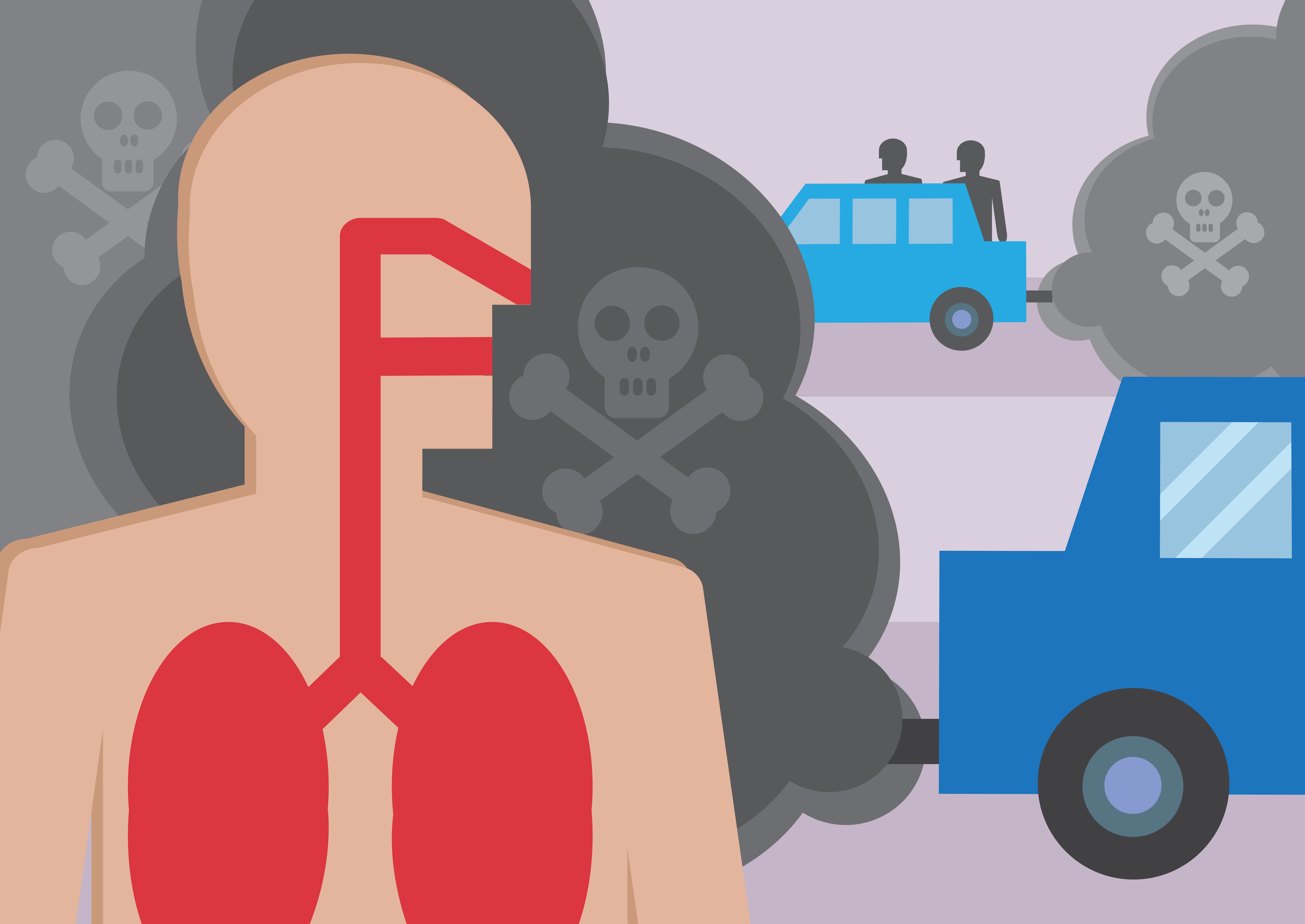Inside Labs
Inside Labs
Diesel Exhaust Can Damage the DNA in the Cells of Your Lungs
Update 13.12.2022
Diesel
Exhaust Can Damage the DNA in the Cells of Your Lungs
New evidence shows that particulate
matter from diesel exhaust—a major air pollutant—can damage human lung fibroblast cells
The
rising incidence of lung cancer worldwide has been linked to increasing levels
of air pollutants, such as diesel exhaust particles. However, the biological
events that occur in the body after exposure to these particles are poorly
understood. A recent study by a group of scientists from Korea has now
unearthed the smoking gun—DNA damage and genome-wide changes—which could flip
the cancer switch in normal lung cells.

A new study examined how diesel exhaust particles, an important source
of particulate matter and air pollutants, damage lungs at the genetic level
Photo courtesy: Shutterstock
Air pollution is a major cause for concern, especially in urban and densely
populated areas. One key contributor to air pollution is fine particulate
matter, such as diesel exhaust particles (DEP), which are generated due to the
combustion of diesel. Owing to their small size, DEP can easily enter the
respiratory tract, causing lung diseases like asthma, bronchitis, and even
cancer.
The link between DEP and lung cancer in particular has
become increasingly apparent in recent years. DEP are considered “carcinogens”—agents
that cause cancer—and studies have demonstrated their toxicity against lung
cells. However, these studies were based on animal cells or human cancer cells,
limiting their generalizability to real-life conditions. Given the significance
of understanding DEP-induced cancer development in healthy individuals, an
assessment of how these particles affect normal human lung cells is warranted.
In their study published in Biomolecules, a research team led by Dr. Jung from the Korea National Institute of
Health set out to address this gap. Owing to the major role of gene-level
alterations in the development of lung cancer, the research team exposed normal
human embryonic lung cells to DEP and then examined any gene-level changes using
conventional assays. This study was supported by a fund (2019-NI-099-01,
2019-NI-098-01) by the Research of Korea Disease Control and Prevention Agency
(KDCA).
Their preliminary experiments showed that exposure to DEP led to oxidative
stress—a condition of imbalance in which volatile molecules produced by cells
react with DNA, proteins, and other biomolecules and damage them—in lung cells.
Subsequently, using a comet assay in which damaged DNA appears to form a comet
tail-like structure, they observed the breakage of DNA strands in cells exposed
to DEP. “Our results provide irrefutable evidence that DEP cause DNA strand
breaks, which in turn result in chromosomal abnormalities and often represent the
first step towards carcinogenesis,” state the researchers, adding that
these breaks are often caused by oxidative stress.
To further understand any chromosomal instability caused by DEP, the
research team performed microscopic examinations and observed that DEP exposure
increased the number of micronuclei (small broken-off fragments of chromosomes)
in lung cells, supplementing the evidence pointing to the genotoxic effects of
DEP.
Next, to explore the genome-wide effects of DEP, the researchers examined whether
exposure to DEP alters gene expression, a hallmark of cell behavior. Using a
technique called “untargeted RNA-sequencing,” they found that lung cells
exposed to DEP show the suppressed activity of genes required for normal DNA
damage repair and cell division, which has been implicated in the development
of cancer. “Our study is the first to use untargeted RNA-sequencing to
understand how DEP can change the landscape of global gene expression in normal
human lung WI-38 cells,” say the researchers. “Overall, our findings
provide a comprehensive insight into the alterations DEP cause to chromosomes
and gene regulation in lung cells, thereby causing cell damage and
carcinogenesis. Although validation experiments will be required to strengthen them
further, our results are of great significance from a clinical translation standpoint,”
they add.
The findings of this study, which explain the link between fine particles
like DEP and lung cancer, represent an important breakthrough in the journey
towards the clinical management of the disease. “Lung cancer and air pollution are major public health problems in
several countries, including Korea. Understanding why lung cells turn cancerous
after being exposed to air pollutants could be instrumental in developing
strategies for preventing and treating the associated diseases,” says the research team, hopeful of the road
ahead.
Reference
|
Authors
Title of original paper
Journal |
Joong Won Lee1,
Hee Jae Lee1, Young-Joo Lee2, Yong-beom Lim2
, Woo Jong Sim3, Ji-Hye Jang1, Hye-Ryeon Heo1,
Hyun Joung Lim1, Ji-Won Jung1, and Jin Sik Kim3
Determination of
Genotoxicity Attributed to Diesel Exhaust Particles in Normal Human Embryonic
Lung Cell (WI-38) Line
Biomolecules |
|
|
|
|
DOI
Affiliations |
1.
Korea National
Institute of Health, Korea 2.
Yonsei University,
Korea 3.
Korea Conformity
Laboratories, Bio Division, Korea |
About National Institute of Health in Korea
The Korea National Institute of Health (KNIH), one
of the major operating components of the Ministry of Health and Welfare, leads
the nation’s medical research. Over the past seven decades, the KNIH has made
unwavering efforts to enhance the public’s health and innovate biomedical
research. The KNIH seeks to eradicate diseases and make people healthier. The
KNIH establishes a scientific basis and evidence underlying health policy as
well as provides national research infrastructures. We also promote public
health research. To this end, we make efforts to enrich a health research
environment by granting funds to research projects and keeping our resources,
data, and facilities more open and accessible to researchers.
Website:
http://www.nih.go.kr/eng/
About Dr. Ji-Won Jung
Dr. Ji-Won Jung is the head of the Division of
Research Planning, Korea National Institute of Health. He currently plays an
important role in establishing and coordinating the research agenda for KNIH.

